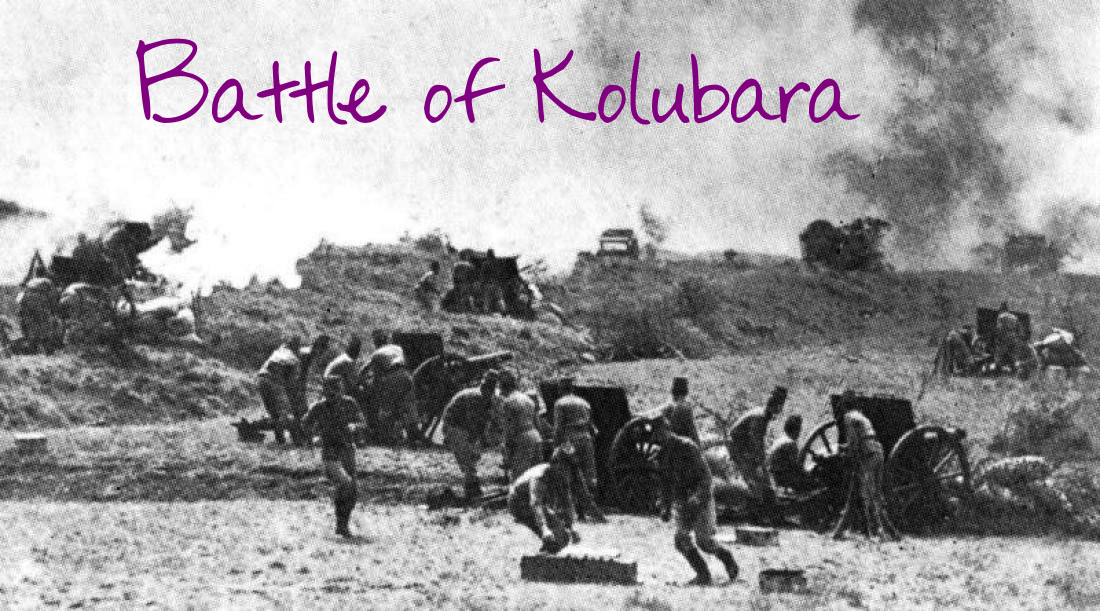
Battle of Kolubara
On November 16, 1914 the Austro-Hungarian armies reached the Kolubara River, under the command of Oskar Potiorek. Thus, the Battle of Kolubara. This was the third Austro-Hungarian invasion of Serbia.
Just the day before, Potiorek and his men had captured Valjevo, “forcing the Serbs to abandon their capital, Belgrade, and relocate to the central Serbian town of Niš” (Source). Needless to say, the Austro-Hungarians were feeling pretty good about themselves.
Desperate, the Serbian chief of general staff, Radomir Putnik, moved his forces to the Kolubara River. This was his last stand. This, he hoped, would give him a defensive advantage, for once. Even to more to his advantage was the fact that, despite their successes, the Austro-Hungarian armies were dreadfully low on supplies. Not only that, they were exhausted and freezing. It was mid-November, after all.
So, Putrik was left feeling pretty good about his chances of victory at Kolubara River, which is probably why he refused to follow the advice of General Živojin Mišić, who suggested that the Russians retreat in order to gain some time to reorganize their forces. Ahem, but, as soon as the Austro-Hungarian armies arrived “the Serbs managed to force the Austro-Hungarians back, and over the next five days, they fought a series of battles suffering heavy casualties in heavy rain and snowfall, resulting in many soldiers succumbing to frostbite or hypothermia” (Source).
But the Austro-Hungarians would not be defeated. By November 18, Potiorek’s 6th Army had moved into formation for further assault. They hoped to push the Serbians back once more, this time to Gornji Milanovac. This would then allow them to capture Lazarevac, giving them further access to the Mladenovac Railroad and even Belgrade.
By their reasoning, this would allow them to outflank the Serbs.
And by the evening of November 19th, they managed to capture Vrace Brdo. Putnik was finally forced to retreat, allowing the Austro-Hungarians to advance deeper into Serbia, and leaving Belgrade undefended.
Taking full opportunity of the Fifth Army advanced towards Belgrade. They captured the city on December 1st. But in doing so, “he had dangerously overstretched his forces” (Source).
[Below: Austrian entry into Belgrade.]

Meanwhile, on December 2nd, Putnik ordered a counterattack. “The Serbian withdrawal had been well executed and the army [was] able to rest and recuperate” (Source). Back in Vienna, crowds had been celebrating each of the new Hapsburg advances. This, however, was not something to celebrate. To make things even better for Putnik, they received much-needed supplies from the Allies. The Austro-Hungarians, on the other hand, were quickly running low on supplies. Plus, they were taken completely by surprise – they were in the middle of a military parade, after all.
“The first day’s attack succeeded in pushing the Austro-Hungarian troops back a few miles, and more importantly restored the Serbs’s flagging morale” (Source). The was Putnik’s excuse, after all, that he was only taking the offensive to rise Serbian morale.
By the end of the 3rd, the Austro-Hungarians were forced to retreat, abandoning all of their weapons and equipment in the fields. The Hapsburg forces collapsed. On the 8th, they were forced to abandon Valjevo and on the 14th Belgrade. Meanwhile, “the Serbs captured tens of thousands of prisoners” (Source). Yet another loss for the Austro-Hungarians simply proved to their allies, the Germans, that they could not be relied upon to help win this war. And, of course, the Germans were thrilled to exploit that situation, resulting in Austrian resentment.
[Below: Serbian victory.]

